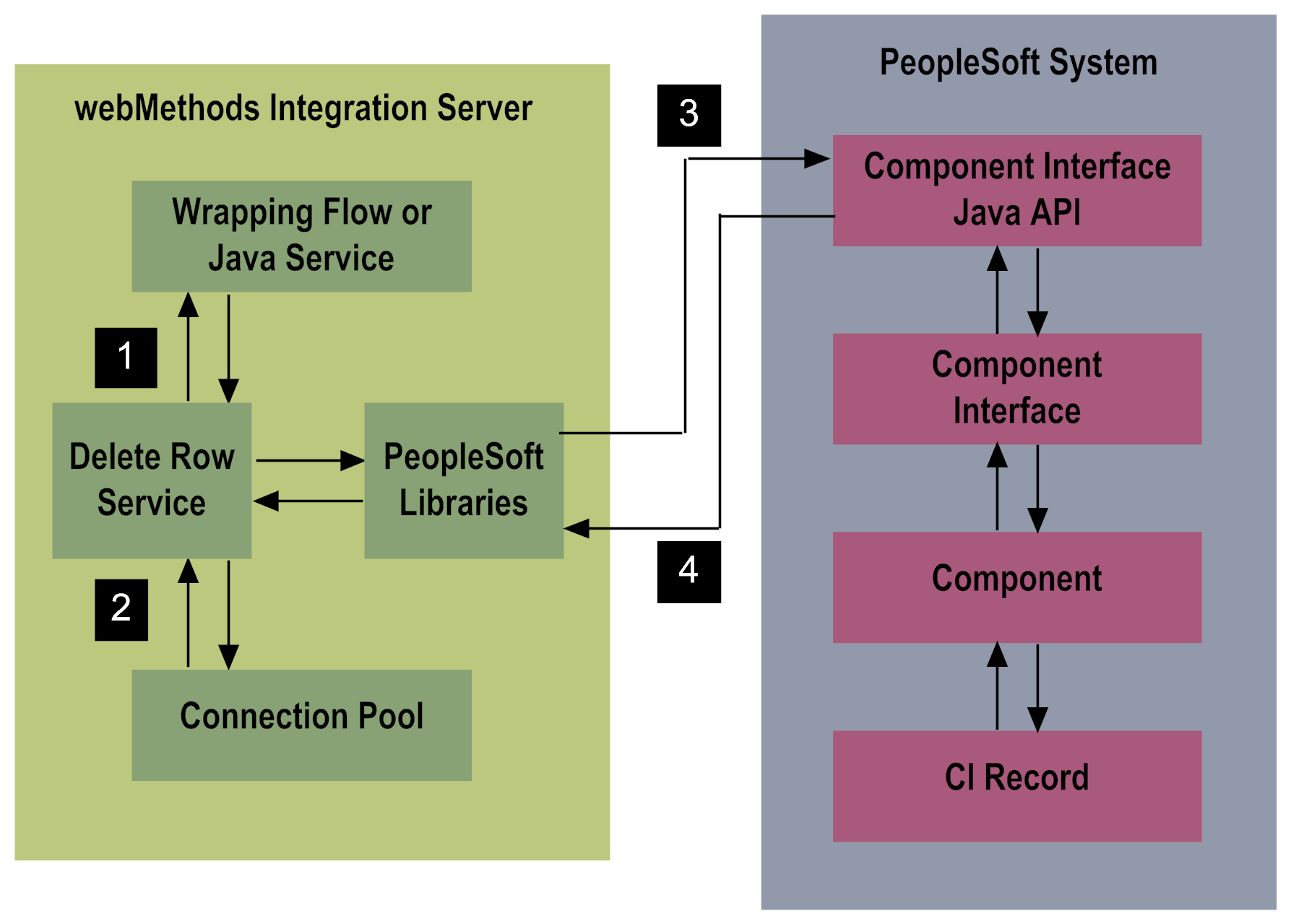

Step | Description |
1 | A flow or Java service, typically invoked by an Integration Server client, initiates the Delete Row service on the Integration Server. You configure the Delete Row service, and the wrapping flow or Java service, using Designer. |
2 | The Delete Row service retrieves a connection from the service's associated connection pool. You configure and enable the adapter connection using the Integration Server Administrator. For more information about connection pooling, including the run-time behavior of connection pools, see
Connection Pooling. |
3 | The Delete Row service uses the PeopleSoft component interface Java APIs along with PeopleSoft libraries (which you installed in the Integration Server in
Setting Up Your Adapter's Environment) to connect to the PeopleSoft system and identify the parent-level record containing the child-level row to delete. The service's input signature includes CI lookup key fields that the service uses to identify the parent-level record, and delete key fields that the service uses to identify and delete the child-level record. You define the Delete Row service's input signature when you create the service. Fields that you select on the Lookup Key Fields tab in the adapter service template, and fields you select on the Delete Key Fields tab, become the service's input signature. |
4 | The Delete Row service returns a status document indicating whether or not the service was successful. You can optionally include this status message in the service's output signature. This status is added to the pipeline of the Delete Row service. You define the Delete Row service's output signature when you create the service. Select the STATUS option on the Output Fields tab in the adapter service template to include the STATUS message in the service's output signature. You define the Delete Row service's output signature when you create the service. Fields that you select on the Output Fields tab in the adapter service template become the service's output signature. |